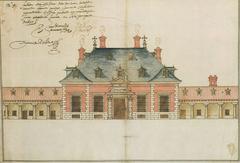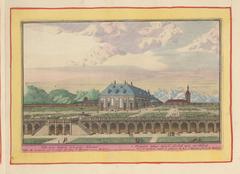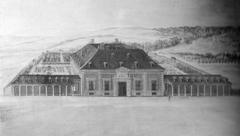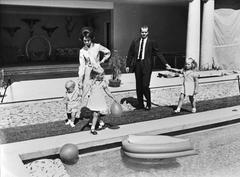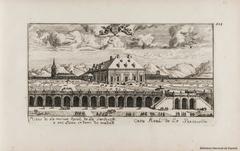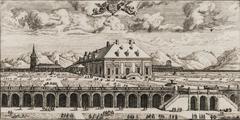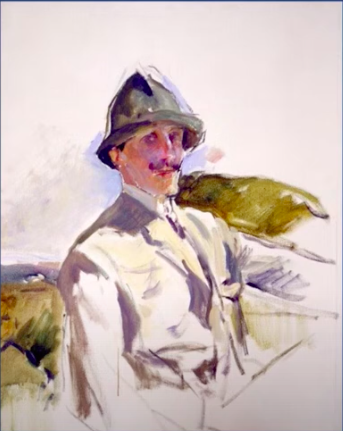
Palace of Zarzuela Madrid: Visiting Hours, Tickets, and Travel Guide
Date: 14/06/2025
Introduction
The Palace of Zarzuela, or Palacio de la Zarzuela, is one of Spain’s most significant royal residences, located on the outskirts of Madrid and enveloped by the serene Monte de El Pardo forest. Originally constructed in 1627 as a hunting lodge for King Philip IV, the palace has evolved through centuries of history and now serves as the private home and working office of Spain’s reigning monarch, King Felipe VI. Despite its understated Baroque architecture and tranquil gardens, Zarzuela Palace is not open to the public, making it a source of intrigue for history enthusiasts and royal watchers alike.
This guide explores the palace’s historical development, architectural features, and its modern role in the Spanish monarchy. It also provides practical advice for visitors—including accessibility, nearby attractions, and alternatives for those wishing to experience Spain’s royal heritage.
Authoritative information can be found at Spain.info, Royal Central, and HelloTravel.
Table of Contents
- Introduction
- Historical Evolution
- The Palace Today: Role and Use
- Visiting the Palace of Zarzuela
- Cultural Legacy and Opera
- Frequently Asked Questions (FAQ)
- Conclusion
- References
Historical Evolution
Origins and 17th-Century Construction
Commissioned by King Philip IV in 1627, the Palace of Zarzuela began as a rural hunting lodge in the bramble-filled region known as La Zarzuela—its name derived from “zarzas,” or brambles (Spain.info; Wikipedia). Designed by architect Juan Gómez de Mora, the palace was built in the Baroque style, emphasizing symmetry and restrained elegance. Its sober, rectangular two-storey structure reflected a practical yet refined approach, distinctly different from the opulence of Madrid’s city palaces (Royal Central).
Architectural Enhancements
Shortly after its completion, Alonso Carbonell added a slate roof and arched galleries. Italianate terraces, fountains, and tree-lined gardens enhanced the picturesque setting, harmonizing architecture with the natural landscape (Spain.info). Interior decorations featured works by Bartolomé Zumbido and Simón López, contributing to the palace’s artistic value.
18th-Century Modifications
Under King Charles IV in the late 1700s, the palace’s interiors were renovated: tapestries, porcelain, elegant lighting, and an impressive clock collection were added, further distinguishing Zarzuela as a private royal residence (Wikipedia; Royal Central).
Restoration after the Spanish Civil War
The Spanish Civil War (1936–1939) severely damaged Zarzuela Palace. Restoration led by Diego Méndez in 1958 faithfully revived its historical features and gardens based on 17th-century plans (Unofficial Royalty; Express UK).
From Franco to Modern Royalty
Following the Civil War, the palace became the residence of Prince Juan Carlos and Princess Sofía in 1962, marking its role as the home of Spain’s monarchy during the country’s political transition. King Juan Carlos I chose to remain at Zarzuela after the monarchy was restored in 1975, favoring its privacy over the more ceremonial Royal Palace of Madrid (Royal Central; Madrid Tourist Info).
The Palace Today: Role and Use
Zarzuela Palace is the principal residence and working office of King Felipe VI and his immediate family. The grounds include the Prince’s Pavilion, built for Felipe and Queen Letizia between 1999 and 2002, and house reception rooms, a library, and the king’s office. The property is state-owned and administered by Patrimonio Nacional, reflecting both its historical importance and daily relevance (Unofficial Royalty).
Visiting the Palace of Zarzuela
Visiting Hours and Tickets
The Palace of Zarzuela is not open to the public. There are no visiting hours, no ticket sales, and no guided tours. Security and privacy measures are strictly enforced (HelloTravel; Visit European Castles).
Accessibility and Security
Located northwest of central Madrid, near Pozuelo de Alarcón, the palace is accessible by car or taxi within 20–30 minutes. Public transportation is limited due to the secluded setting. The palace is set back from public roads and heavily guarded; attempts to enter the grounds are illegal (HelloTravel).
Viewing the Palace and Photography
You may be able to glimpse the entrance or exterior from certain points around the El Pardo complex, but views are restricted. Photography is only permitted from public roads and vantage points, and visitors must comply with all posted security and privacy signs.
Nearby Attractions
If you’re interested in royal heritage, Madrid offers several accessible alternatives:
- Royal Palace of Madrid (Palacio Real): The ceremonial palace, open for guided tours and public visits (Madrid Tourist Info; Satguru Experiences).
- Royal Palace of El Pardo: A former hunting lodge, sometimes open for tours.
- San Lorenzo de El Escorial: A UNESCO-listed palace-monastery, about 45 km from Madrid.
- Royal Palaces of Aranjuez and La Granja de San Ildefonso: Both accessible by train or car.
Travel Tips for Tourists
- Do not attempt unauthorized entry to Zarzuela Palace.
- Respect all privacy and security instructions.
- Combine your visit with nearby royal sites for a rich historical experience.
- Use private transport for convenience; public transit options are limited.
Cultural Legacy and Opera
Zarzuela Palace is not only a royal residence but also the birthplace of the zarzuela, a form of Spanish musical theater blending spoken and sung scenes. This legacy is honored in Madrid’s annual Zarzuela and Opera Festival (Wikiwand; Esmadrid).
Frequently Asked Questions (FAQ)
Q: Can I visit the Palace of Zarzuela?
A: No. The palace is a private residence and not open for public tours.
Q: Are there visiting hours or tickets?
A: There are no public hours or tickets available.
Q: Can I see the palace from public roads?
A: Views are limited and distant, as the palace is set back and well-guarded.
Q: What are the best royal sites to visit nearby?
A: The Royal Palace of Madrid, El Escorial, El Pardo, and Aranjuez are all recommended.
Q: Are guided tours available?
A: Not for Zarzuela Palace, but nearby royal sites offer guided tours.
Conclusion
The Palace of Zarzuela is a living symbol of Spain’s royal tradition—rich in history, architecture, and cultural legacy. While it remains closed to the public in its role as the private residence of King Felipe VI, the palace’s story provides valuable context for anyone interested in Spain’s monarchy. Travelers to Madrid can explore other grand royal sites, such as the Royal Palace of Madrid and El Escorial, to experience Spain’s regal past firsthand. For updated travel tips and cultural news, consider downloading the Audiala app and following related social media channels.
References
- Spain.info - Palace of Zarzuela
- Royal Central - Zarzuela Palace
- Madrid Tourist Info - Royal Palace
- Unofficial Royalty - Zarzuela Palace and the Princes Pavilion
- HelloTravel - Zarzuela Palace
- Visit European Castles - Royal Palaces in Spain
- Satguru Experiences - The Royal Palace of Madrid
- Express UK - Queen Letizia Spain Zarzuela Palace Madrid El Pardo Complex Royal Home Inside Pictures
- Wikiwand - Palace of Zarzuela
- Britannica - Royal Palace of Madrid
- CatalunyaDiari - Impact of Zarzuela Palace on Princess Leonor
- Architectural Digest - Zarzuela Palace Gallery
- Express UK - Royal Home of King Felipe VI
- Esmadrid - Events Calendar

